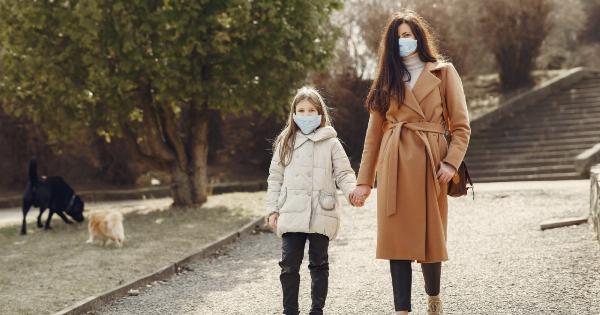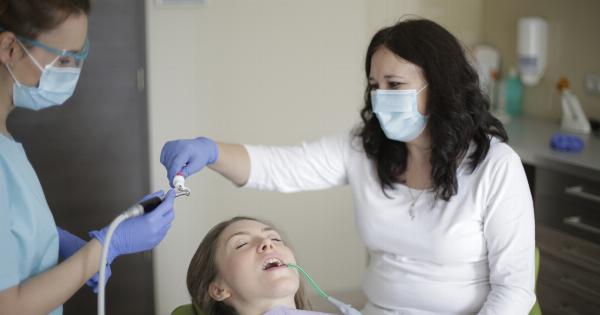Breathing is a basic function that humans perform without thinking. However, as parents, it’s important to pay attention to how our children breathe, especially during their early developmental stages.
Breathing can occur naturally through the nose or mouth, but mouth breathing, also called oral breathing, can pose health hazards in children.
What is mouth breathing?
Mouth breathing is when air enters and exits the body through the mouth instead of the nose.
Children who mouth breathe rely on their mouth to take in and expel air from their lungs, whereas, normally, breathing is controlled by the diaphragm and nostrils. Mouth breathing can become a habit that many children adopt, and if not addressed, it can become a chronic issue that can have long-lasting health effects.
Causes of mouth breathing in children
There are many reasons why children may start to breathe through their mouths. Some of the common causes include:.
- Nasal congestion: Allergies, colds, or other respiratory infections can cause nasal congestion, which makes it difficult to breathe through the nose. Children may start to breathe through their mouths to compensate for the lack of airflow through the nose, especially during sleep.
- Anatomic abnormalities: Deviated septum, enlarged adenoids, or tonsils, can obstruct nasal airflow and push children to breathe through their mouths.
- Chronic allergies: Allergies can cause nasal inflammation and congestion that can last for weeks or even months, forcing children to breathe through their mouths.
- Behavioral tendencies: In some cases, mouth breathing can become a habit. Children who frequently use their mouth to breath may find it easier to continue doing so instead of shifting to nasal breathing.
Health hazards of mouth breathing in children
Mouth breathing in children can pose several health hazards that can affect their growth and development. Here are some of the possible consequences of mouth breathing in children:.
- Increased risk of respiratory infections: Mouth breathing bypasses the natural filtration system of the nose, and ingests particles, germs, and debris that can enter the respiratory system and cause infections. Mouth breathing can also dry out the airways, making children more vulnerable to respiratory illnesses.
- Oral and dental problems: Mouth breathing can lead to dry mouth, which in turn can cause gum diseases and tooth decay. Dry mouth can also lead to bad breath, making children self-conscious and uncomfortable in social situations.
- Poor sleep quality: Mouth breathing often leads to disrupted sleep, snoring, and even sleep apnea. When children breathe through their mouth during sleep, they don’t get enough oxygen, and their sleep cycle is disrupted, leading to fatigue, irritability, and decreased academic performance.
- Facial abnormalities: Chronic mouth breathing can lead to long-term changes in facial development, including flattened facial features, narrow jaws, and an underdeveloped chin. These changes can affect the way the face looks, as well as impair the function of speech, swallowing, and chewing.
Treatment options for mouth breathing in children
Parents who notice that their children are mouth breathing should seek medical help for proper diagnosis and treatment. Here are some of the treatment options available for children who mouth breathe:.
- Manage nasal congestion: Nasal congestion is a common cause of mouth breathing. Treating allergies, using nasal sprays, and removing irritants from the environment can reduce congestion and promote nasal breathing.
- Surgical intervention: In cases where the cause of mouth breathing is anatomical, such as enlarged adenoids or tonsils, surgery may be required to remove the obstruction and allow nasal breathing.
- Oral myofunctional therapy: This type of therapy aims to retrain the tongue and oral muscles to function correctly, promoting nasal breathing and reducing mouth breathing.
Preventing mouth breathing in children
Preventing mouth breathing in children is possible through several simple strategies, including:.
- Breathing exercises: Encouraging children to breathe through their nose can help them strengthen their respiratory muscles and improve their nasal breathing.
- Oral hygiene practices: Good oral hygiene practices can prevent tooth decay, gum diseases, and bad breath associated with mouth breathing. Children should brush and floss their teeth twice a day and use mouthwash to keep the mouth moist and healthy.
- Maintaining a healthy environment: Reducing exposure to irritants such as secondhand smoke, dust, and pet dander can help prevent nasal congestion and reduce mouth breathing in children.
Conclusion
Breathing through the nose is essential to maintain proper respiratory function and health in children. Parents should pay attention to the way their children breathe and seek medical help if they notice signs of mouth breathing.
Mouth breathing in children can lead to several health hazards, including respiratory infections, oral and dental problems, poor sleep quality, and even facial abnormalities. Fortunately, with proper diagnosis and treatment, and preventive measures, parents can help their children breathe healthy and prevent future health problems.































